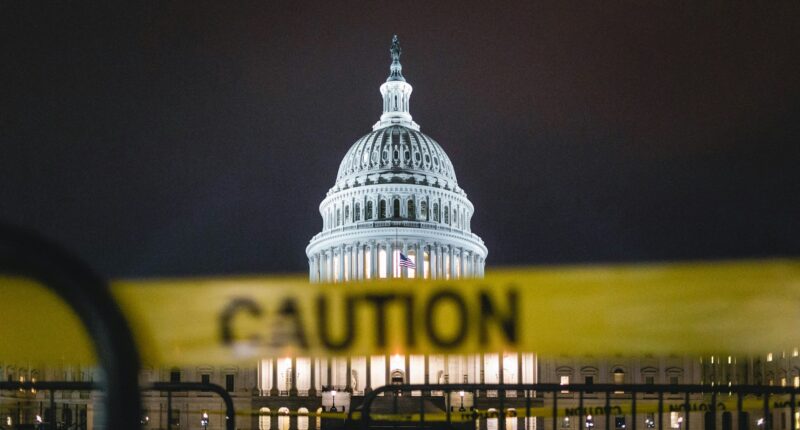The budget reconciliation measure Congress recently passed includes some important reforms designed to help reduce entitlement spending. But any realistic assessment of the nation’s fiscal position reinforces why Washington must go much further in reducing spending than the half-measures enacted in recent weeks.
In March, as lawmakers were beginning debate on the “big, beautiful bill,” the Congressional Budget Office released its annual version of the “Long-Term Budget Outlook,” which features economic and budgetary projections for the next three decades. The CBO report provides a clear look ahead to the debt crisis our nation faces if Washington does not soon get its fiscal house in order.
Debt Bomb Ahead
The first paragraph of the report’s first chapter makes clear the scope of the problem:
In CBO’s projections, federal debt held by the public rises in every year of the 2025-2055 period, reaches 156 percent of gross domestic product (GDP) in 2055, and remains on course to grow larger thereafter. In 2029, it climbs to 107 percent of GDP, exceeding the historical peak of 106 percent reached in 1946, immediately after World War II.
Think about that: Within four short years, the national debt will hit an all-time high as a share of the economy — and continue to rocket ever higher.
These “persistently large deficits,” in the range of 6-7 percent of GDP, mean prolonged and significant harm for the American economy, as CBO notes. The burden of the federal debt will raise interest rates and inflation, while Washington’s need to borrow so much money will crowd out private investment, slowing economic growth. Even without an immediate fiscal crisis — i.e., investors refusing to buy Treasury bonds, raising the risk of a default — economic stagnation will hurt working families across the country.
Unsustainable Entitlements
Contra President Trump’s claims to “protect” Social Security and Medicare, the CBO report shows how those programs are effectively insolvent — and how failing to reform or change these unsustainable programs is making the entire federal government insolvent. By 2055, Social Security and health care entitlements (i.e., Medicare, Medicaid, and Obamacare) will go from comprising 55 percent of noninterest federal spending this year to consuming two-thirds of the federal budget:

Image CreditCongressional Budget Office
CBO also notes that “growth in spending on Medicare is projected to account for more than 90 percent of the increase in spending on the major health care programs over the next 30 years,” due in part to the retirement of the baby boom generation. In other words, our country cannot get its fiscal house in order unless and until it starts slowing the explosion of Medicare spending.
Could Get Worse
As bleak as the March CBO report looked, the country’s financial situation could — and quite probably will — get worse. For starters, in March, CBO increased its 30-year revenue projections and slightly reduced its Medicare spending projections compared to last year’s version of the long-term budget outlook. Those changes mean that the federal government faces a debt bomb of “only” 154 percent of GDP three decades from now, as opposed to 166 percent of the economy in last year’s edition.
The “big, beautiful” bill will likely change the situation for the worse. While some of the tax reductions in the bill will generate economic growth, and therefore more federal revenue from said growth, the tax cuts likely will not fully “pay for themselves,” as both the March CBO report and an analysis from Sen. Ron Johnson, R-Wis., explained.
Moreover, because some of the tax cuts in the just-passed measure will expire in future years, lawmakers will face pressure to extend them — and extend them by growing the national debt. It’s fairly easy to envision a scenario whereby lawmakers of both parties decide to extend those tax cuts, and even undo some of the spending reductions included in this month’s measure. That’s how Congress has operated for years, as a version of “Oprah ’s Favorite Things” where “You get a car! You get a car! You get a car! Everybody gets a car!”
But eventually, the bill will come due. CBO’s report serves as another warning bell that that day is getting ever closer and that the consequences will not be pretty once our nation’s debt bomb finally detonates.









